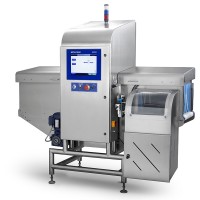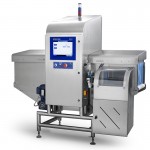Color plays a huge role in how we decide what to eat. It’s often the first element noticed in the appearance of a food product and as humans, we begin to associate certain colors with various food types from birth. We then attribute these colors to certain tastes. For example, if something is bright red, we might assume it will taste like cherry or cinnamon. If something is bright green, we might expect that food product to taste like lime or apple. And when it comes to fresh foods, like fruits and vegetables, we rely on the color to determine the ripeness or freshness. So aside from expected taste, what else do colors mean when it comes to food?
Red – Appetizing: According to research, the color red is not only eye-catching, but also triggers appetite and is used on a majority of packaging designs. This is perhaps because the color, when found in natural foods like berries, indicates ripeness or sweetness.
Blue – Appetite Suppressant: Surprisingly, there are no true blue foods found in nature, and no, blueberries are actually a shade of purple! Blue, in relation to foods, is actually an appetite suppressant. This is why some weight loss plans suggest placing your food on a blue plate, or even dying your food blue to avoid overindulgence.
Yellow – Happiness: Yellow is perceived as the happiest color and is used widely in various food products. As such, yellow tends to evoke optimism and general good feelings. There are, however, speculations and disagreements when it comes to the artificial color of yellow in food products.
Green – Natural/Healthy: With sustainability and organic being at the top of mind for a large amount of consumers, green is making its way to becoming one of the more popular colors in the food supply chain (think green juice). The color green is now almost synonymous with health and well-being when it comes to food.
Orange – Satisfying/Energizing: One article states that orange is associated with foods that are hearty and satisfying, like breads, soups and potato products, but can also be seen as a source of energy.
Color choices when it comes to packaging
As mentioned above, color is the first thing we notice when it comes to appearance. In fact, more than 90% of purchase decisions are influenced by visual factors, and 85% of shoppers say that color is the primary reason for buying a product. With that in mind, understanding how color on packages dictates purchasing behavior is important to food manufacturers. While the descriptions of colors above represent how we feel towards food items, the colors on the packaging of those food items elicit completely different feelings. For example, seeing blue eggs on a plate versus purchasing eggs in blue packaging will evoke different emotions. Here’s how a few colors break down in terms of packaging:
Red – Energy: Red is a very bold color and using it in your packaging helps to draw attention to you product. Not only does it spark appetite, but it’s also the color we tend to look at first. This is why red is so popular among food packages.
Blue – Trust: Unlike the food color of blue, using blue in your packaging helps to portray trust and dependability in your product. It should be noted, however, that darker blues are considered more professional and serious, whereas lighter blues help to give the perception of softness and creativity.
Yellow – Optimistic: Yellow in packaging is very similar to yellow in food coloring. It helps to suggest that something is original or innovative, or that the product is cheaper/fun. With the positive energy of this color, we typically see it used to help attract children and young adolescents.
Green – Healthy: As with green in food coloring, green in packaging is also associated with healthy and organic products. With the increase in consumers being more aware of their health and what goes into their bodies, we are seeing green used in more and more product packaging.
Purple – Uniqueness: Using purple in your packaging helps to imply that your product is unique or original, and with purple being attributed to spirituality, it is often used in holistic products. It should also be noted that purple tends to be more attractive to females and the youth market, but is slowly making its way into acceptance within the male audience.
Orange – Affordability: Orange is often times used to portray value and affordability, and for food marketers, using orange on packaging helps to give the item a more affordable feel.
Black – Luxury: Black typically stands out on packaging and tends to appear heavier and more expensive, which transmits a higher perceived value. You can see this color used on items like premium ice creams and chip packages. And depending on what colors you choose to pair it with, black can give off various feelings.
Brown – Earthy: Brown tends to be used in products that want to portray a natural, wholesome or organic feel, as well as comfort and simplicity. We often see brown packaging in products that promote sustainability, proclaiming that the materials used to make the package were recycled.
White – Simple: White is viewed as simple, pure and basic, and is a good choice when attempting to create the impression of cleanliness, purity, efficiency or, of course, simplicity. And depending on the additional colors chosen to pair with white, you can give your packaging, or product, a completely different feel.
When it comes to getting your product off the shelf and into consumers’ homes, color has a lot to do with first impressions. So when deciding on packaging or even food coloring, make sure to pay close attention to the psychology behind color when it comes to purchasing behavior. Do you have additional tips on choosing colors for food items and packaging? Leave a comment below and let us know!








